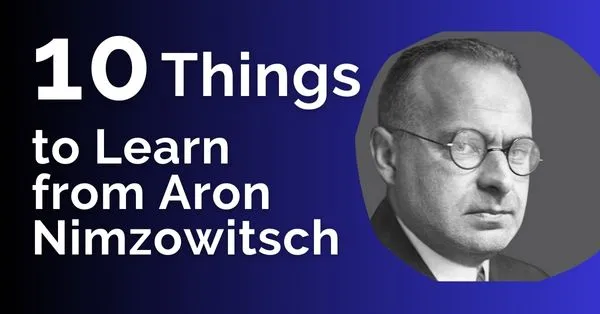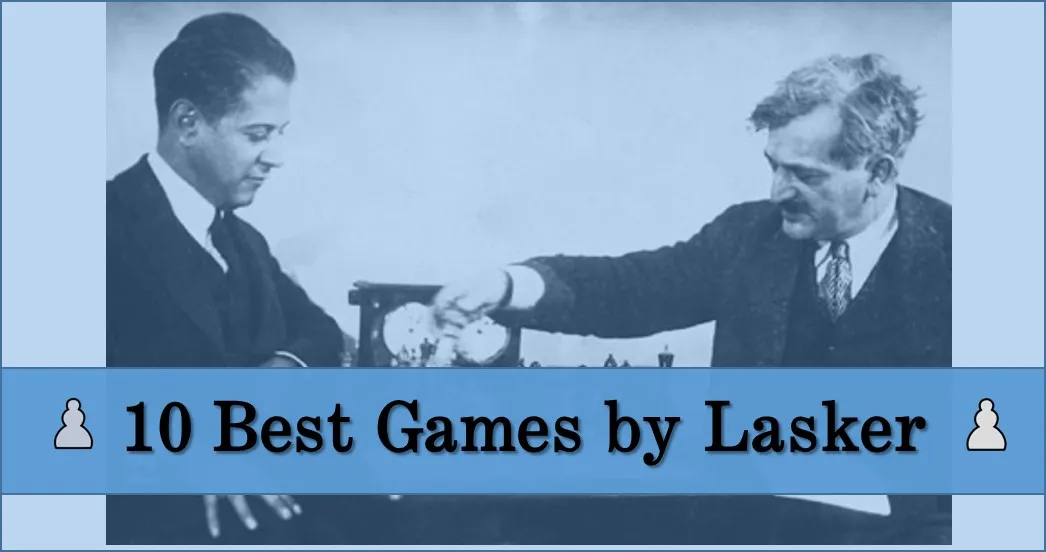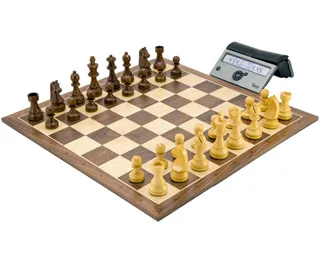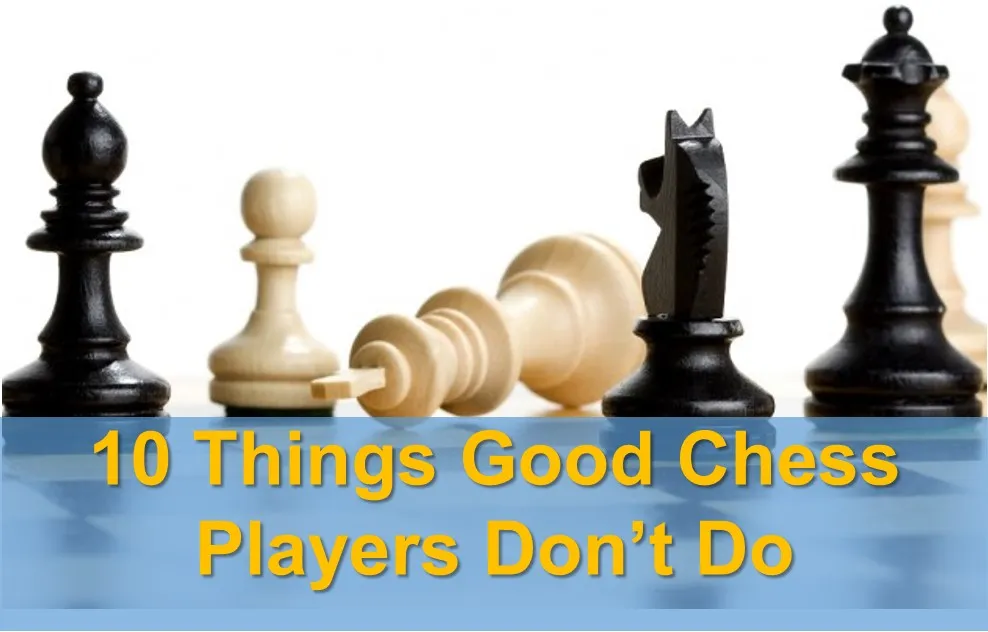10 Things to Learn from Aron Nimzowitsch

Aron Nimzowitsch was one of the deepest thinkers of the 20th century. He established chess concepts and built a whole theory of play from them.
The Classical way of thinking in chess was pioneered by Steinitz and preached by Tarrasch. After the mid-1910s several chess masters began to play a different brand of chess.
The main heroes of this chess were Reti, Nimzowitsch, and Alekhine among others. Nimzowitsch although having played chess classically made enormous contributions to this new brand of chess called the ‘Modern Chess’. It would seem that all the old dogmas had suddenly collapsed.
It differed from the didactic and principal way of playing chess. Acceptance of such a radical thought proves that Nimzowitsch was a free and deep thinker of his times. Ahead of many players in foresight.
Nimzowitsch combined all these ideas in his two seminal works. These books have received high praise from the chess world for many years. He wrote several books and articles that are still relevant and instructive for chess players of all levels. Chess players of any era can learn a great deal from a modern thinker like Nimzowitsch.
Here are 10 things that you can learn from Nimzowitsch:
1. The Importance of Prophylaxis.
Nimzowitsch introduced the term “prophylaxis”. The term prophylaxis comes from the Greek words “pro” and “phylaxis”. “Pro” translates to “before” and “Phylaxis” means “act of guarding”. It is the anticipation of the other players’ ideas and motives.
This differed from the earlier line of thought. The way the old generation played chess was to focus on the mobilization and advance of one’s pieces. This approach advocated an approach to chess, where you constantly anticipate and hinder your opponent’s moves, rather than just reacting to them. Prophylaxis is a key skill for any chess player, as it helps you maintain control and initiative.
2. The Power of the Blockade.
Nimzowitsch was a master at recognizing the potential of new ideas. He was a pioneer of blockading weak pawns and squares. He showed how a blockading piece can not only immobilize the enemy pawn but also create pressure and threats on other parts of the board. Nimzowitsch also demonstrated how to use the blockade as a defensive weapon, by neutralizing the opponent’s attack and creating counterplay.
3. The Value of the Pawn Center.
This was one of the greatest revelations from the Hypermodern school of chess. It emphasized that big pawn centers are not absolute! They can break down and even become a target.
Nimzowitsch was one of the first players to challenge the classical dogma that only pawns should control the center. He argued that the pieces can also control the center, especially bishops, which can exert influence on many squares without being easily attacked. He also showed how to use pawn breaks to open up the center and create dynamic possibilities.
Here is an example game where Nimzowitsch employs this radical new strategy.
4. The Art of Overprotection.
This is the concept where you overprotect a key point in your position. It is a refined form of prophylaxis. The key point is generally a point on which the whole strategy is based for each side. If that point collapses so does the strategy built on it. Therefore, it makes sense to allocate additional resources to the defense of this point.
Nimzowitsch claimed that overprotection creates a psychological advantage, as it discourages the opponent from attacking and gives you more freedom and confidence to launch your own plans.
5. The Mystery of the IQP.
Nimzowitsch had a deep understanding of the isolated queen pawn (IQP) structure, which arises when a pawn is left alone on the file. He showed how to play with and against the IQP, depending on the concrete features of the position. He explained that the IQP can be a strength or a weakness, depending on whether it gives you more space and activity, or whether it becomes a target for your opponent.
6. The Beauty of the Zugzwang.
Aron Nimzowitsch was fascinated by the zugzwang, which is a situation where a player has to make a move, but any move he makes worsens his position. He demonstrated how to create zugzwang situations in various types of endgames, such as rook endgames, bishop endgames, and pawn endgames.
In the game below he uses his fascination with the concept and plays a stunning game. In the game, the opponent is in a Zugzwang in the middlegame! An uncommon sight in a chess game.
7. The Spirit of the Sacrifice.
Nimzowitsch was not afraid to sacrifice material for positional or psychological reasons. He showed how to sacrifice pawns or pieces for long-term compensation, such as initiative, pressure, or attack.
8. The Role of the Rook Lift.
Nimzowitsch was fond of lifting his rooks to the third or fourth rank, where they can support his pawns or pieces, or prepare an attack on the enemy king. He looked at rook lifts as a helping maneuver for the rook to make it perform better. The rook goes from a passive position to an active one without the help of pawn breaks.
9. The Principle of Restraint.
Nimzowitsch advocated for a calm and restrained style of play, where you do not rush or force things, but rather wait for the right moment to strike. With such an approach to chess, he would’ve been surely at odds with Morphy.
There are positions where you play actively and there are positions where restraint is needed. In such a position without restraint from the player, the position would collapse. This style of play was refined further by the modern players. Now we regularly see moves in the master level where slight improving moves are played without inducing weaknesses in the position.
You might also like 10 Best Games by Aron Nimzowitsch as well as The Nimzowitsch Defense with FM Zaur Tekeyev [TCW Academy].
10. The Habit of Constant Learning.
Although starting to learn chess at a different age with different ideas Nimzowitsch was always eager to learn new things and improve his chess understanding. He never shied away from embracing new ideas that could revolutionize chess. He also experimented with his own concepts and innovations.
https://thechessworld.com/store/product/learn-from-aron-nimzowitsch-with-im-boroljub-zlatanovic/










Comments: